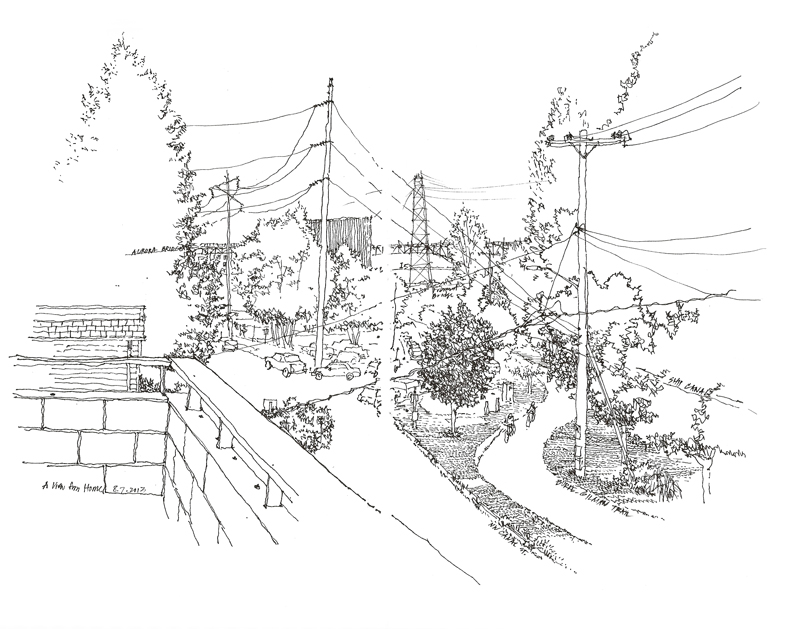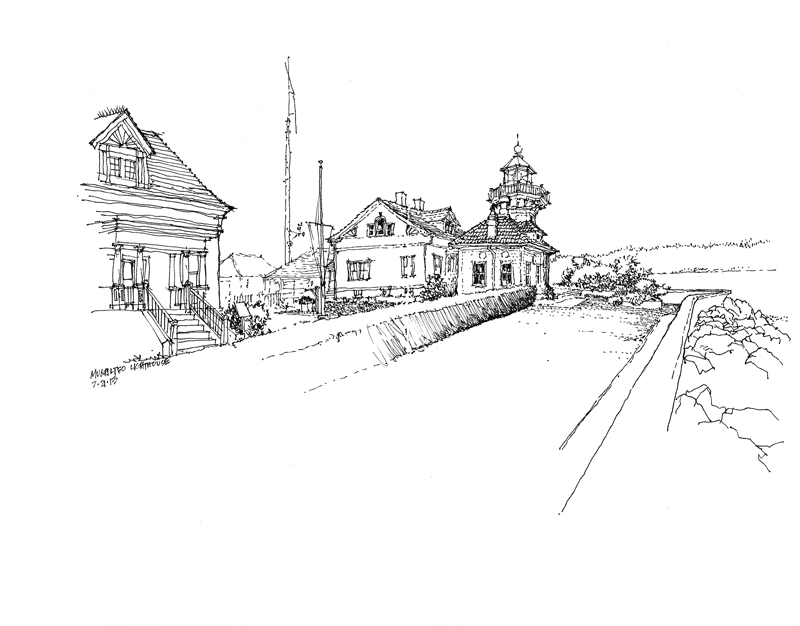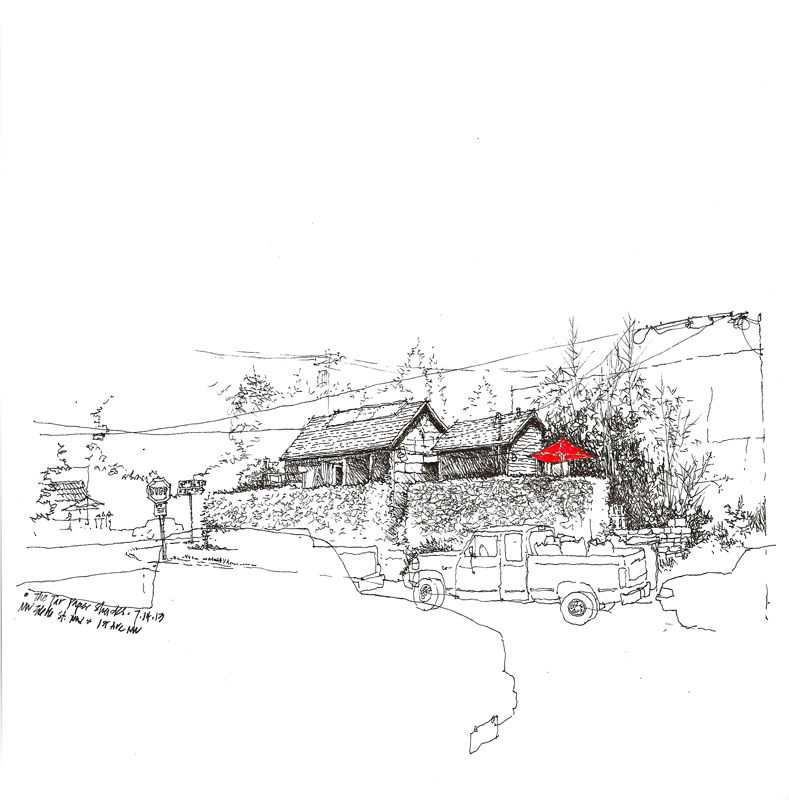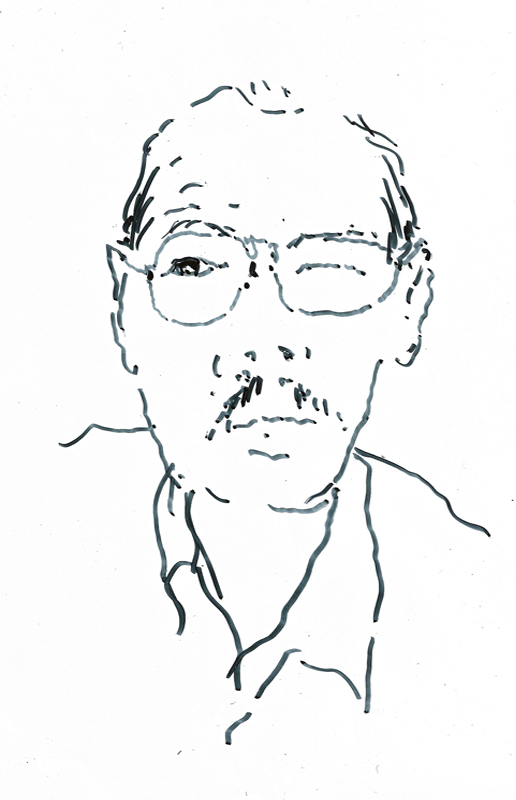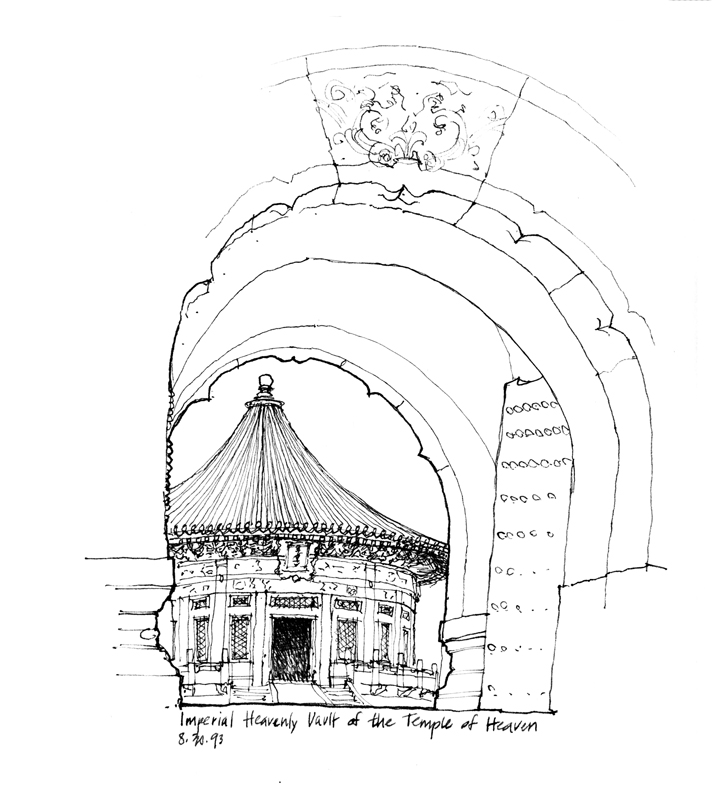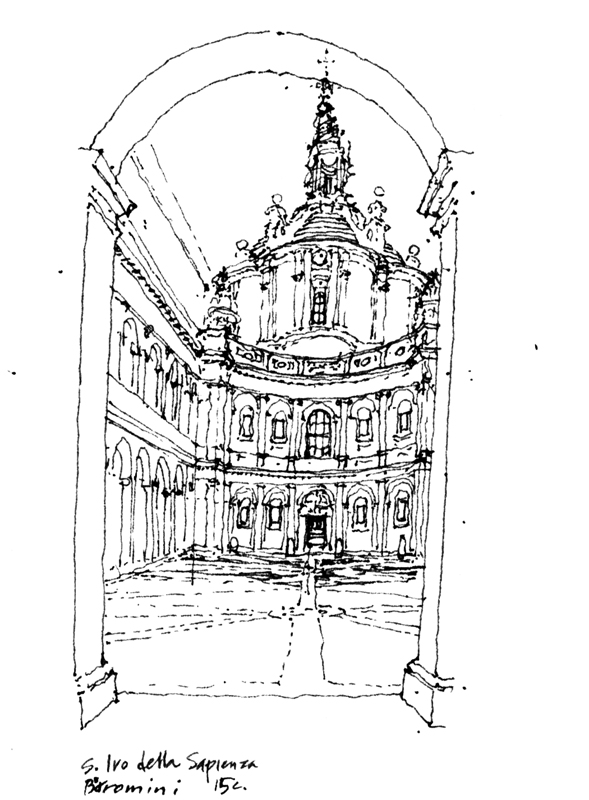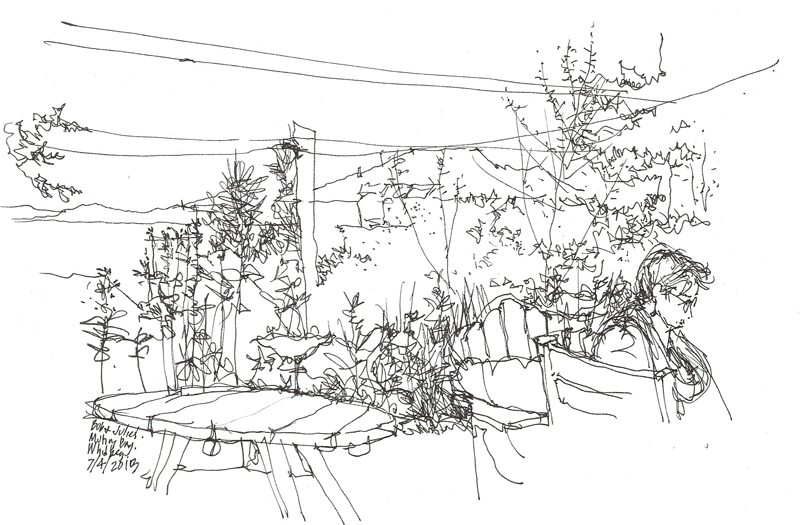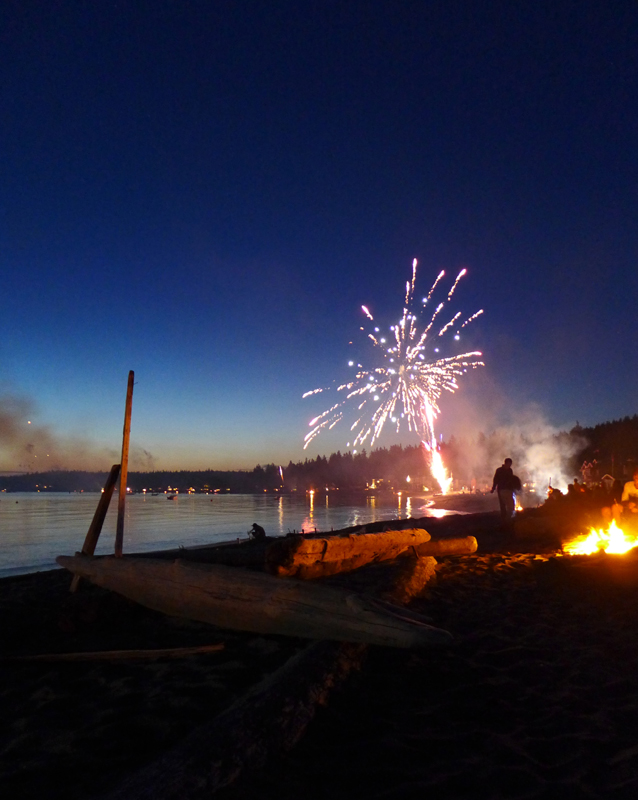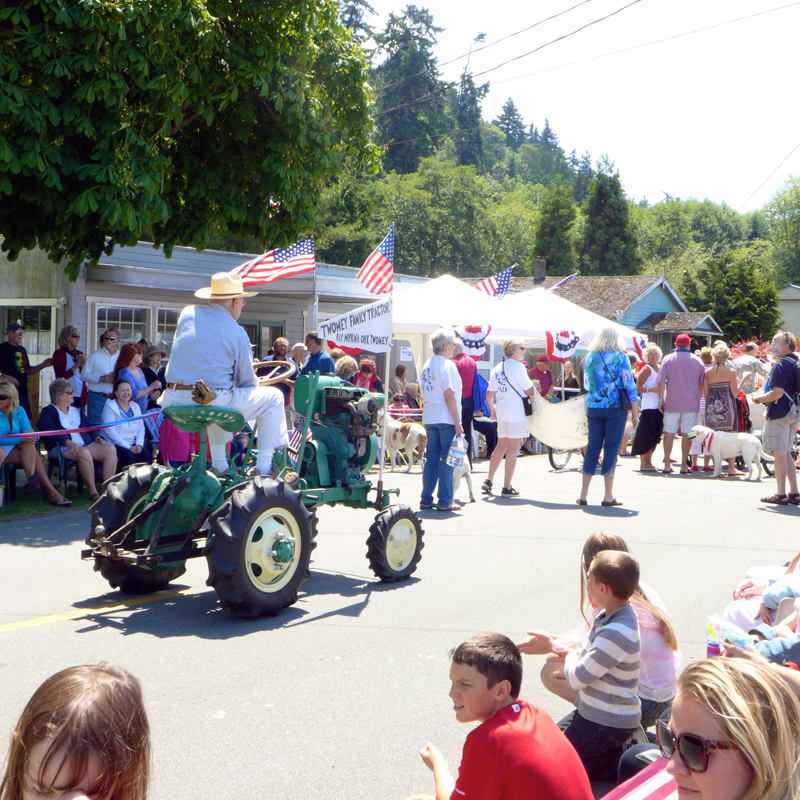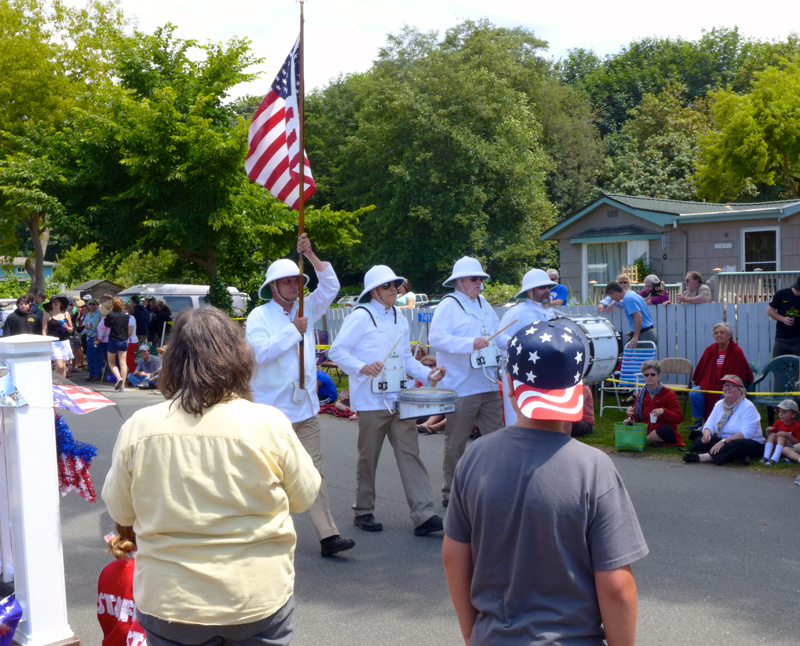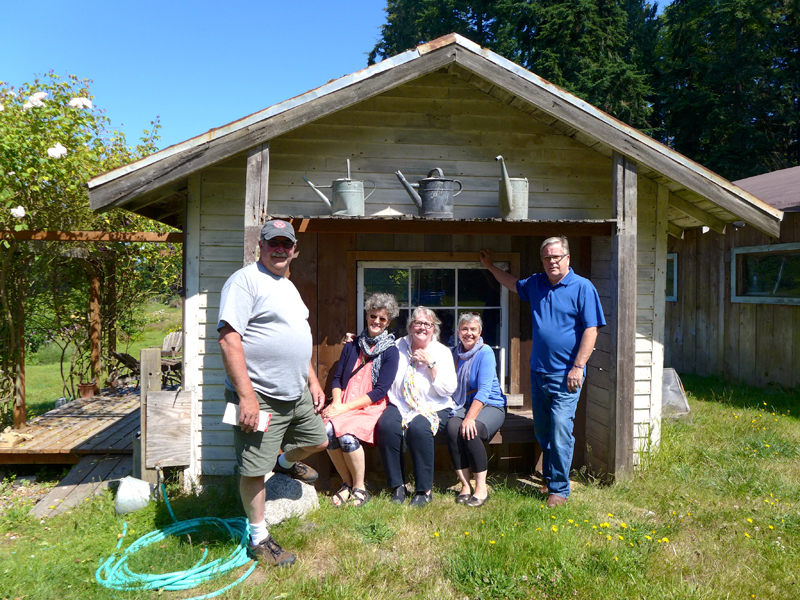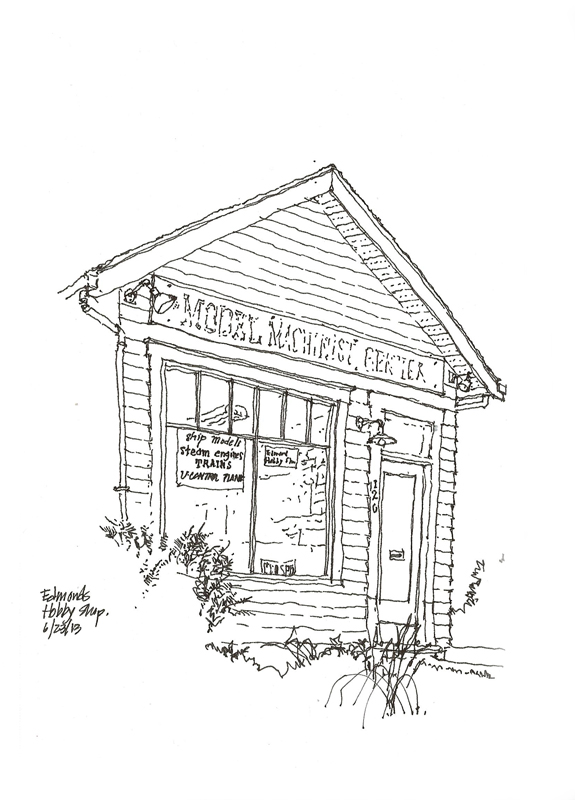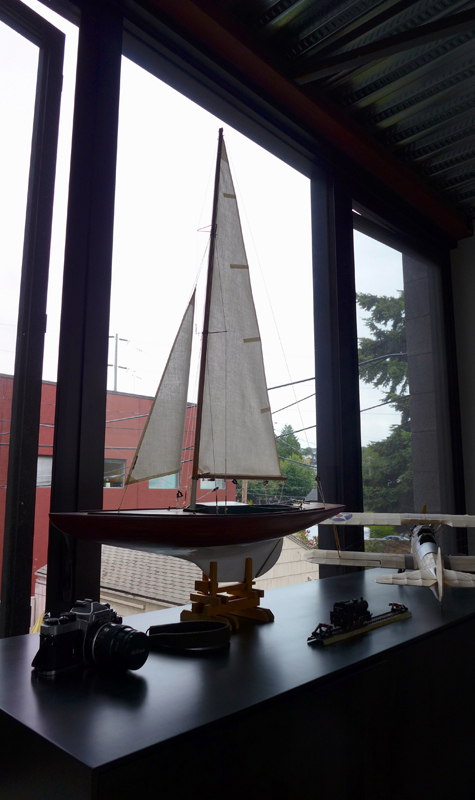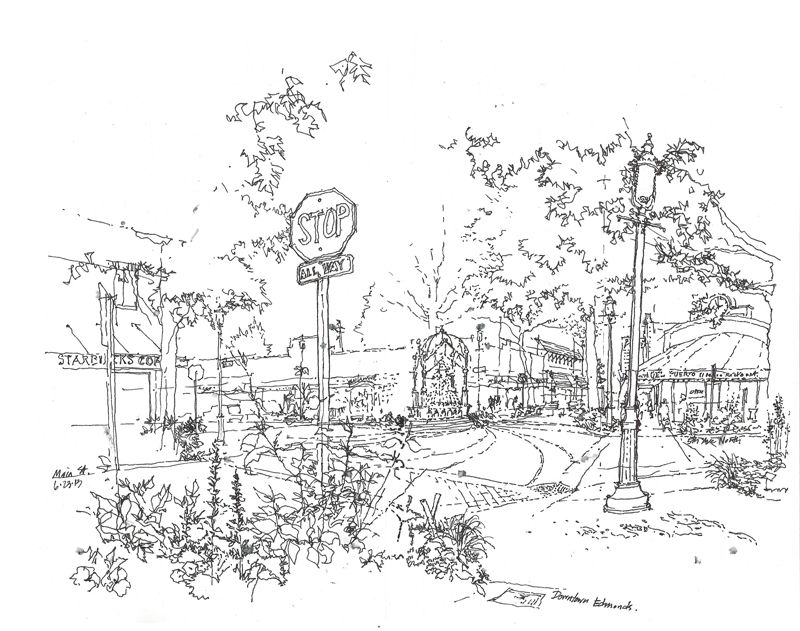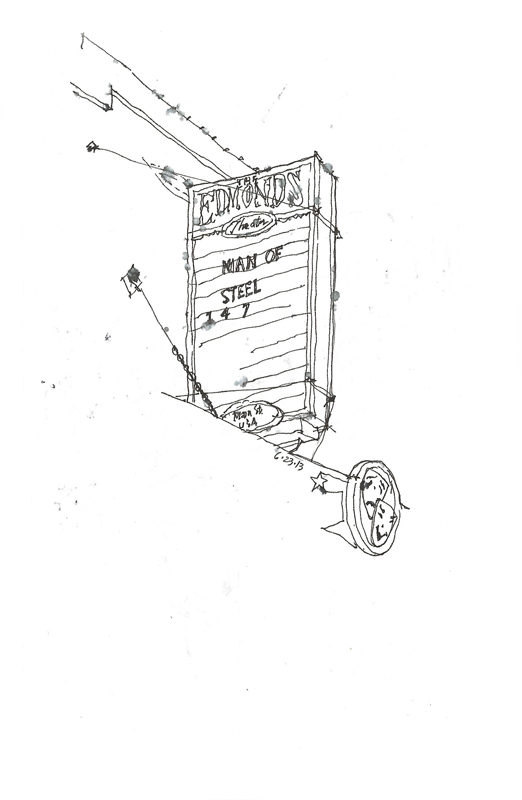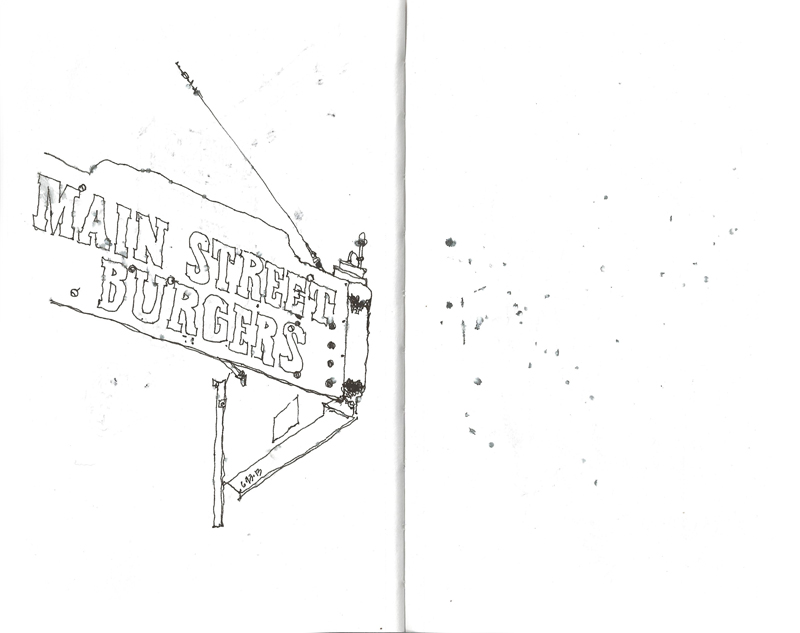A view from the south-facing deck off of my new home office space, fronting on the Burke-Gilman Trail and the Ship Canal and looking eastward toward downtown Fremont.
Seattle Workshop II
Gail Wong and I will be offering a second Line to Color workshop in Seattle September 6–8. As in our spring workshop, we’ll begin on Friday evening with an introductory sketching session followed by dinner and presentations at the Ballard Pizza Co. On Saturday, we’ll work in the Fremont neighborhood and at Gasworks Park. Then on Sunday, we’ll meet the Seattle Urban Sketchers at either Pike Place Market or Pioneer Square. As always, it should be fun. And beginners are certainly welcome!
Here is a pdf offering a complete schedule and more information.
If you’re interested or have any questions, please contact Gail at gail@glwarc.com.
Fremont Mischief Distillery
Mike and Patti Sherlock started making rye whiskey in the late 1990s from a recipe from the journals of John Jacob, an immigrant from Holland and Patti’s great-grandfather. When Washington state passed the craft law in 2008, Mike and Patti founded Fremont Mischief Distillery. Here is a view of the distillery with its retail shop and tasting room fronting the Ship Canal.
Fremont Mischief distills whiskey, gin and vodka using winter wheat grown on Whidbey Island and rye from small Washington State farms and the Willamette Valley in Oregon. Quoting from the distillery’s website:
“Fremont Mischief is a full-circle distillery. We begin by selecting the finest organic, heirloom and small farm conventional grains & botanicals. Together with pure artesian waters, these ingredients are skillfully crafted into fine spirits with the help of our artisan stills. Then, our spent grain is reused and ultimately returns, full-circle, as organic compost for farms and gardens. We recognize the artistry in crafting fine spirits. Our stills are a work of art themselves. They are hand-made by Arnold Holstein Co., a German family that’s been building distilleries for many decades. We worked closely with the still-maker, to incorporate proprietary technology into our columns stills. No need for twelve times distilled or even three. Our stills allow us to distill pure, flavorful spirits the very first run.”
Mukilteo Lighthouse
The Seattle UrbanSketchers met at the Mukilteo Lighthouse on a cool, foggy morning this past Sunday. Surprisingly, the lighthouse is rather diminutive, only 38 feet tall and constructed of wood. It began operations in 1906 to guide ships on their way to Everett, Washington, as well as those traveling up Possession Sound and the Saratoga Passage.
Because the lighthouse grounds didn’t open until noon, I walked along the beach at low tide, and climbed up on some rocks until I could capture this view from the top of the seawall.
The Mukilteo Light Station was placed on the National Register of Historic Places in 1977 and is now maintained by the Mukilteo Historical Society, although the navigational equipment is still maintained by the Coast Guard.
The Tar Paper Shacks
These humble gable structures wrapped in tar paper have been around ever since I moved to the Fremont neighborhood in 1982. I don’t mean to demean the place by calling it the Tar Paper Shack; I actually admire the simplicity of the gable forms and how they manage to fit into the tight corner site in a rather graceful manner.
I don’t know much about their history or story, nor anything about who might be living there. Nevertheless, I am sure those driving along Leary Avenue NW where it turns into NW 36th Street will recognize it, and maybe even miss it if it is ever replaced.
Drawing a Self-Portrait
Drawing a self-portrait was the initial assignment we used to give students at the outset of our design drawing class. The process we outlined was as follows:
“Have available a fine-tipped black pen capable of marking a sheet of clear acetate. Select a comfortable, seated position in front of a mirror and tape the acetate sheet to the mirror where your face appears. Carefully consider the shape, proportion, and features of your face.
With the pen and using a line technique, draw your portrait directly on the sheet of acetate. To do this, you must look through only one eye—your dominant eye. To find out which is your dominant eye, mark the tip of your nose on the mirror with both eyes open and then shutting each eye in turn. Seen through your dominant eye, the mark will hardly move; through the weaker one, the mark will shift considerably.”
This is my attempt, which I’ve flipped so that the image is as you would see me. It seems that I’m looking to my right but I was actually looking straight ahead. While the task itself does not take very long, it is difficult to keep your head steady while trying to trace the contours of your face. You also learn after a few tries not to draw every line you see! This was a fun exercise that not only introduced the students to drawing from observation but also helped us identify students before the age of digital cameras.
Arched Openings
A common technique for composing a drawing is using a window or doorway to frame the scene. I particularly like using arched openings as a framing device since the shape is easily recognizable for what it is. Here are three examples, one of the Temple of Heaven in Beijing, another of S. Ivo in Rome , and the third from an old brewery building in Halifax, Nova Scotia.
In each case, I start with the shape and proportions of the arched opening. I then use this shape and size as the measure for everything that is seen and drawn within the arched shape. The arched shape also serves as the foreground element that establishes where I am and my relationship to what I am viewing.
Notice that I drew the archway leading to the courtyard and Borromini’s S. Ivo della Sapienza a little low but I didn’t let this prevent me from drawing the full height of its spire. This is a reminder to never let a framing device alter the proportions of what you are drawing.
Independence Day 2013
Independence Day in the U.S. has always been for me a summery mix of parades, cookouts, and fireworks. We spent the holiday enjoying the warm and sunny weather with friends on Whidbey Island, where I did this sketch, overlooking a garden, with peaceful Mutiny Bay beyond.
That evening, after dusk, that same beach exploded with fireworks.
Earlier in the day, we had attended the 4th of July parade in the small community of Maxwelton.
Despite all of these rituals, without family and friends, Independence Day would not be special at all.
Building Physical Models
Seeing and drawing this humble hobby shop in Edmonds reminded me of how much I loved building models of all kinds—planes, trains, ships, and for a very brief time, even classical guitars. As you can see in this photo, I still have a few around.
Despite the allure of digital models and fabrication techniques, we can still learn a lot by working with real materials with one’s own hands, feeling attributes such as weight, texture, and grain. Unlike digital models, real materials tell us if we try to make them do things that they are not capable of. And in assembling physical models, we learn that sequence is crucial to success. We can turn a physical model over, not in our heads as we sometimes do with drawings or on the computer monitor as we do with digital models, but in real space and in real time. One can examine materials and joinery closely one moment, and then look at the whole from a more objective distance the next.
I still have a few model kits, just in case I ever find myself with some free time and nothing better to do.
Edmonds, Washington
There was a large turnout yesterday for the monthly Seatttle UrbanSketchers meet-up in Edmonds, Washington. The weather was typical of an early Seattle summer day, overcast with a few sprinkles here and there, evidence of which you can see in my sketches. The first drawing I did was of the Edmonds town center, where Main Street meets 5th Avenue, featuring pavement stripes spiraling outward from a fountain and sculpture in the middle of the intersection. In the drawing, Main Street moves from left to right as it heads westward to the ferry dock, where Washington State ferries make their run across Puget Sound to the town of Kingston on the Olympic Peninsula.
After this first contextual view, I spent what time I had left focusing on a couple of fragments in the downtown area.

